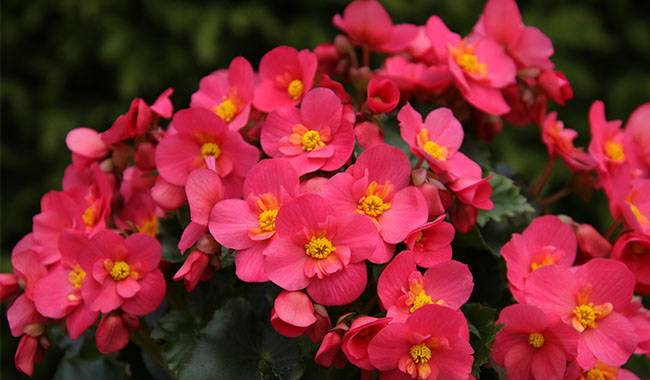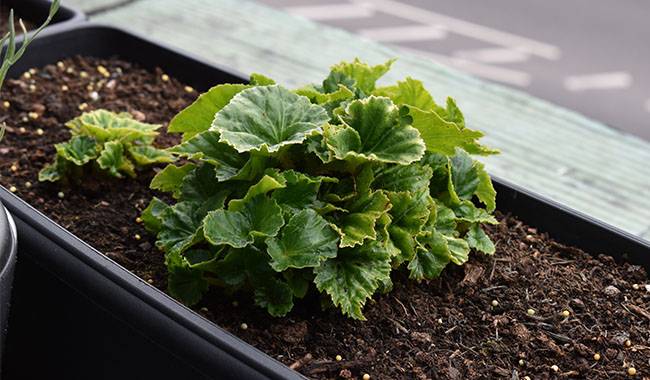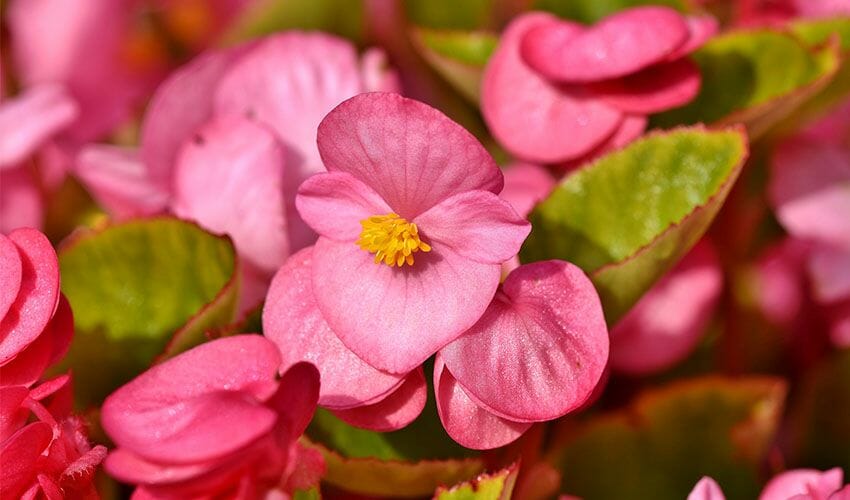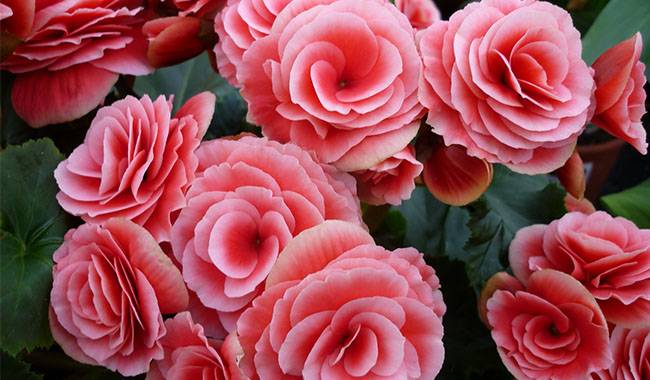
Plants of the genus Begonia (Begonia obliqua) constitute the best known and largest genus of the family Begonia. The genus has about 1,000 species of plants that grow in mountainous, humid tropical forests and subtropical areas at altitudes of 3,000 to 4,000 meters.
Most Begonia species can be found in South America. begonia also grows in the Himalayas, the mountains of India, Sri Lanka, the Malay Archipelago, and western Africa. In addition, it is believed that Africa was the home of the Begonia flower, which then spread to Asia and the Americas.
Even today, more than a third of all species of the genus grow in Africa. Begonia flowers were discovered and described in the 17th century by Charles Plumier, a monk who participated in an expedition to collect plants in the Antilles.
He discovered six species of Begonia and named them after his friend Michel Begon, governor of the island of Haiti. Today, Begonia flowers are one of the most popular plants in gardens and indoor floriculture.
In this article, we will explain how to care for Begonia in the home: how to grow Begonia, what are the conditions of care for Begonia, how to propagate Begonia in the home, and give more important and interesting information about these beautiful plants.
GROWING AND CARING FOR BEGONIA FLOWERS
Flowering: Some varieties are grown as ornamental foliage plants and the flower Begonia can bloom at any time.
Lighting: Bright diffused light (east and west windowsills)
Temperature: The optimum temperature is 64°F (18°C), but in summer Begonia can withstand higher temperatures.
Watering: Balanced: generally moderate, infrequent, in hot and dry periods – abundant water. Between waterings, the substrate in the pot should dry out to a depth of 0.6inch (1.5cm). In winter, watering is significantly reduced and tuberous plants are not watered at all.
Humidity: increase, but to spray flowers is not advisable, it is better to keep on trays with wet pebbles or expanded soil.
Fertilization: flowering Begonia – twice a month, feed the flowering house plants with a complex mineral solution, and during the budding period, fertilize with potassium and phosphorus. Deciduous Begonia species can be fed in the same system together with a complex of ornamental deciduous houseplants.
Dormancy: Weaker in evergreen species, tuberous species have a longer resting period: foliage wilts from mid-autumn, so tuberous Begonia stops feeding, watering is reduced, and after the above-ground parts die completely, potted plants with tubers are stored in a dark room at 50-59°F (10-15°C) until the new planting season. But even if the tuber Begonia is not going to rest, force it to rest: reduce watering and stop fertilizing.
Transplanting: as needed in early spring. Large plants can be divided when transplanted.
Propagation: by seed, leaf cuttings, division of rhizomes, or tubers.
Pests: aphids, nematodes, and red spider mites.
Diseases: Grey rot, periwinkle, powdery mildew, black root disease.
BEGONIA GROWING CONDITIONS
The genus Begonia has about 2000 thousand hybrid forms in addition to more than 1000 species, so it is difficult to give an average botanical description, especially since Begonia is subdivided into different classifications into ornamental foliage and ornamental flowers, evergreen and deciduous, annual and perennial, tall and stalked, tuberous and rhizomatous.
In indoor culture, there are many species and varieties of Begonia, so first of all we will talk about the care of the home Begonia and under what conditions it is kept, and the plants will be described in the species and varieties section.
CARE OF BEGONIA AT HOME
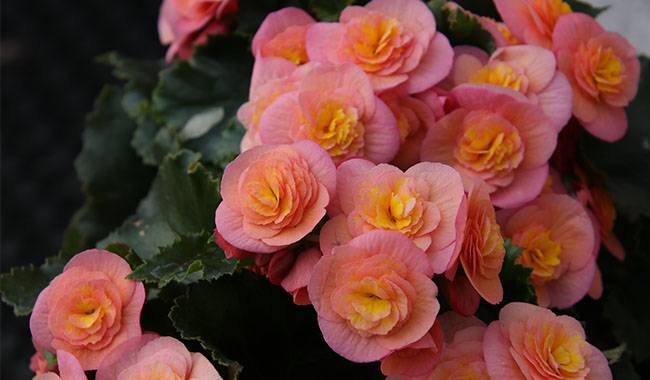
Rules of care
Indoors Begonia likes consistency, so determine for her a place in the apartment once and for all – well-lit but without direct sunlight.
Especially need bright light Begonia blooms, so representatives of the genus Begonia – east- or west-facing windowsills are the best place. The optimum temperature of the plant and winter-summer 64 ° F (18 ° C), but in the summer Begonia can tolerate higher temperatures.
Begonia homes accustomed to tropical conditions prefer high humidity, but it is better to still not spray it, as this is followed by brown spots that appear on its leaves.
To prevent the plant from suffering from dry air, especially in the winter when the heater is at full capacity, place the pot with Begonia on an inverted tray and insert it into the larger tray. Around the smaller tray, fill with expanded clay and keep it moist at all times so that evaporated water creates proper humidity around the plant.
Ornamental Begonia does not tolerate crowding, so try to consider its maximum size when placing it on a windowsill next to other flowers. Frequent ventilation is required, but the plant will respond to wilting and dropping flowers and leaves in the presence of ventilation as well as too high or low temperatures.
Pots and soil
Growing and caring for Begonia at home begins with choosing a planting container. Begonia needs small pots and preferably ceramic pots that are only 1.2-1.6inch (3-4cm) in diameter larger than the plant’s root system, as in overly spacious containers, Begonia can become over-watered and bloom too late.
Soil for Begonia flowers can be purchased at a florist, or you can make your own by mixing two parts leaf soil with one part each of high peat, sand, and humus or turf soil. The optimal substrate acidity for Begonia should be within pH 5.5-6.5.
Planting Begonia
When planting Begonia, fill one-third of the pot with drainage material and put a layer of charcoal 0.8-1.2inch (2-3cm) thick on top to prevent decay. Then place the Begonia in the pot with the root ball in it and fill all the gaps with potting soil.
Water the Begonia after it is planted. Planting in spring starts from mid-March when sufficient light and daylight hours are determined for the development of the plant. Tuberous Begonia should be boxed for germination in a bright spot at 60-64°F (16-18°C) with 60-70% air humidity without going deep into the substrate before planting.
Watering
Caring for Begonia at home requires a balanced moistening of the plant. Chamber flower Begonia is moisture-loving, but that doesn’t mean you need to water it often. It is more important to create enough air humidity for Begonia, otherwise, the tips of the plant’s leaves will dry out.
Watering heavily is only needed in the hot summer, but you need to make sure that the roots of Begonia do not collect water. When watering, use settled water at room temperature throughout the day.
When the ground is dry to a depth of 0.6inch (1.5cm), the plant needs to be watered. Watering should be reduced in winter, and tuberous varieties do not need watering at all in winter.
Fertilization
The care of home Begonia requires fertilization of the ground. Ornamental flowering Begonia species are fertilized with liquid compound fertilizer for flowering plants twice a month from the time of bud formation. At the stage of ovary formation, fertilization is carried out with phosphorus and potassium fertilizers – buds, ovaries, and blooms. Only decorative-leaved Begonia need nitrogen fertilizer – if they are fed with flowering seeds, Begonia flowers do not bloom.
Transplanting
The care and cultivation of Begonia require timely transplanting of the plants, which is done in early spring before intensive growth begins. Then it’s time to transplant Begonia into larger-sized pots, and you will get the hint of drainage holes hanging out from the roots.
Begonia is removed from the pot, the old peat is carefully cleaned, the roots are soaked in a light pink manganese solution for half an hour, then the substrate is gently washed with water to remove the rotten areas, the roots are given a chance to dry and planted in larger pots in the order we described. After transplanting the plants back to their permanent place, water them frequently for the first time.
Young Begonia is easily tolerated, but transplanting more mature plants is much more difficult because of the accumulation of fragile leaves, so once the plant is 3 years old, it is divided into several parts.
Begonia flowers in winter
Autumn Begonia evergreen species weakly behave during the dormant period, and tuberous species need a long rest. How to care for Begonia flowers in winter? The care of home Begonia during the dormant period depends on the species of the plant.
Shrub and decorative species contain temperatures between 59-71°F (15-22ºC) and maintain high air humidity – for this, batteries are covered with wet towels or an air humidifier is installed.
Tuber Begonia is ready to go dormant in mid-autumn – the leaves wilt and die, so watering must be reduced, and when the ground part of the plant is completely dead, pots with tubers are transferred to a dark room and kept at 50-59°F (10-15ºC) until the end of winter.
Sometimes the tuber Begonia acts as if it does not intend to rest, and in order for it to produce abundant flowers the following year, it must be forced to rest: watering is strongly reduced and the above-ground parts are cut back.
PROPAGATION OF BEGONIA FLOWERS
Propagation methods
Propagation by seeds and vegetation – leaf cuttings, stems, divisions of shrubs, or rhizomes (tubers). vegetative propagation of Begonia is easier and more reliable.
Growing from seed
Growing Begonia from seeds is effortless and does not take much time. in late February or early March, sow small Begonia seeds on the surface of light, loose substrate, not embedded in the soil, and place in a warm, bright place, covered with film or glass.
Watering is done in trays or by spraying with a sprayer. Remove the cover as soon as sprouts appear and let the seedlings pickle when they grow 3-4 leaves. After two months, seedlings are planted in separate pots. the begonia blooms from seed in the first year, but it may require additional lighting.
Propagation by meristematic rhizomes (tubers)
Deciduous Begonia is propagated by dividing the rhizomes. To remove the plant from the ground in spring, cut the rhizomes into pieces with a sharp knife, each with roots and at least one shoot or bud. The cut is treated with crushed charcoal and the parts of the rhizome are then planted in separate pots.
You can also divide the tubers of adult Begonia into sections, dry the cuts slightly, treat them with crushed charcoal, and then plant the divisions in separate pots.
Begonia cuttings
Propagation of Begonia from cuttings is the simplest vegetative method. Take cuttings from plants with 3-4 leaves, whose parts to prevent decay are treated with charcoal, and then take cuttings in a substrate of equal parts sand, peat, and leaf soil in a bright, warm place, out of direct sunlight. You can simply root them in water. The roots of the cuttings will grow within a month.
Propagation through the leaves
Since many Begonia species are characterized by large, dense leaves, they can be propagated by leaf cuttings, either from whole leaves or from partial leaves. To propagate as whole leaves, cut the main vein at the bottom of the leaf, place the bottom of the leaf on preheated wet sand, and hold the leaf in place.
The soil is moistened through a tray. After two months, roots will grow out of the veins where they were cut, and new plants will grow. When the small Begonia are strong and in the growth stage, separate them and plant them in a mixture of equal amounts of peat, sand, and leaf soil.
PESTS AND DISEASES
At home, Begonia can be damaged by aphids, nematodes, and red spider mites. Aphids and mites feed on the cellular sap of the plant and Begonia flowers are henceforth unattractive and development is delayed.
Aphids can be removed by 2-3 treatments with 7-10 days intervals with Actellic or Karbofos, and mites can be killed with Decis, Derris, or other insecticides. From nematodes, in the course of life activity, the leaves of Begonia discolored and formed in the roots, without treatment – the flowers will have to be thrown away.
From diseases, autumn Begonia is caused by Botrytis, gray rot, false or true powdery mildew, black root rot – for these diseases you will get help from fungicides.
But sometimes Begonia can get sick from bacterial or viral diseases – cucumber mosaic virus, bacterial wilt, or tomato spot. There is no cure for these diseases, so the plants have to be destroyed.
BEGONIA DRYING
Begonia disease is not the only problem you may encounter. Sometimes the plant behaves strangely – it suddenly starts to dry out its leaves. This is caused by high temperatures and insufficient moisture in the soil and air. Water it and put it in a cool place – on a tray with wet clay pebbles, as described at the beginning.
BEGONIA FLOWERS TURNING YELLOW
Sometimes yellow spots or circles appear on the leaves of Begonia – this is how cucumber mosaic or tomato blotches appear. Diseased plants are destroyed. On the other hand, if the leaves have yellowed and drooped, the Begonia flowers are very cold and there is too much water in the soil. After the soil in the pot has dried out, move the plant to a warmer place.
TYPES AND VARIETIES
A single perfect classification of Begonia does not exist today, but in the specialized literature you can meet the variants of the traditional division of Begonia varieties, for example, into ornamental leaves and ornamental flowers, or, for example, by the characteristics of the underground parts – into rhizomes, tubers Begonia and Begonia with a shallow root system. Some prefer to divide the species of this plant into such groups: ornamental foliage, shrubby and tuberous.
However, in recent times, the species of Begonia are mostly divided.
- Shrubby Begonia, with bamboo-like erect shoots.
- Autumn Begonia with thin and flexible pendulous or prostrate shoots.
- Species with thick pendulous rhizomes or prostrate buds.
- The species that is the ancestor of the beautiful flower hybrid.
In indoor floriculture, it is convenient to use the following classification of Begonia flowers.
- Ornamental indoor Begonia.
- Ornamental deciduous indoor Begonia.
- Decorative flower potted Begonia.




